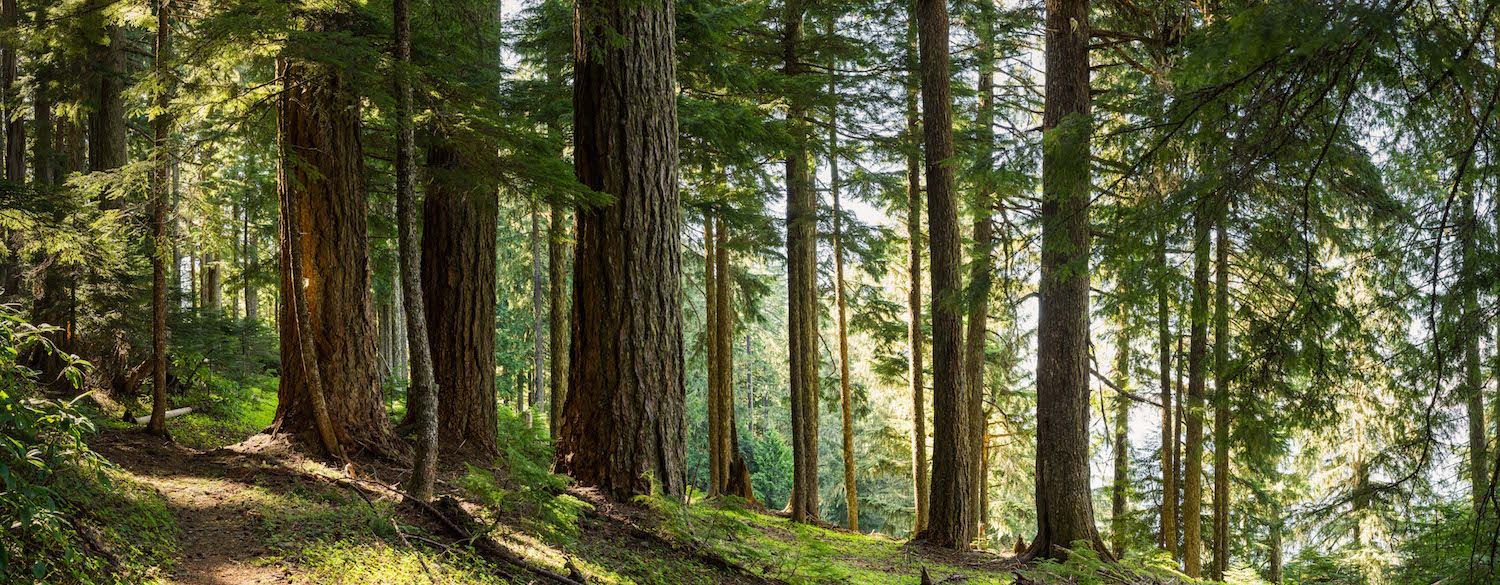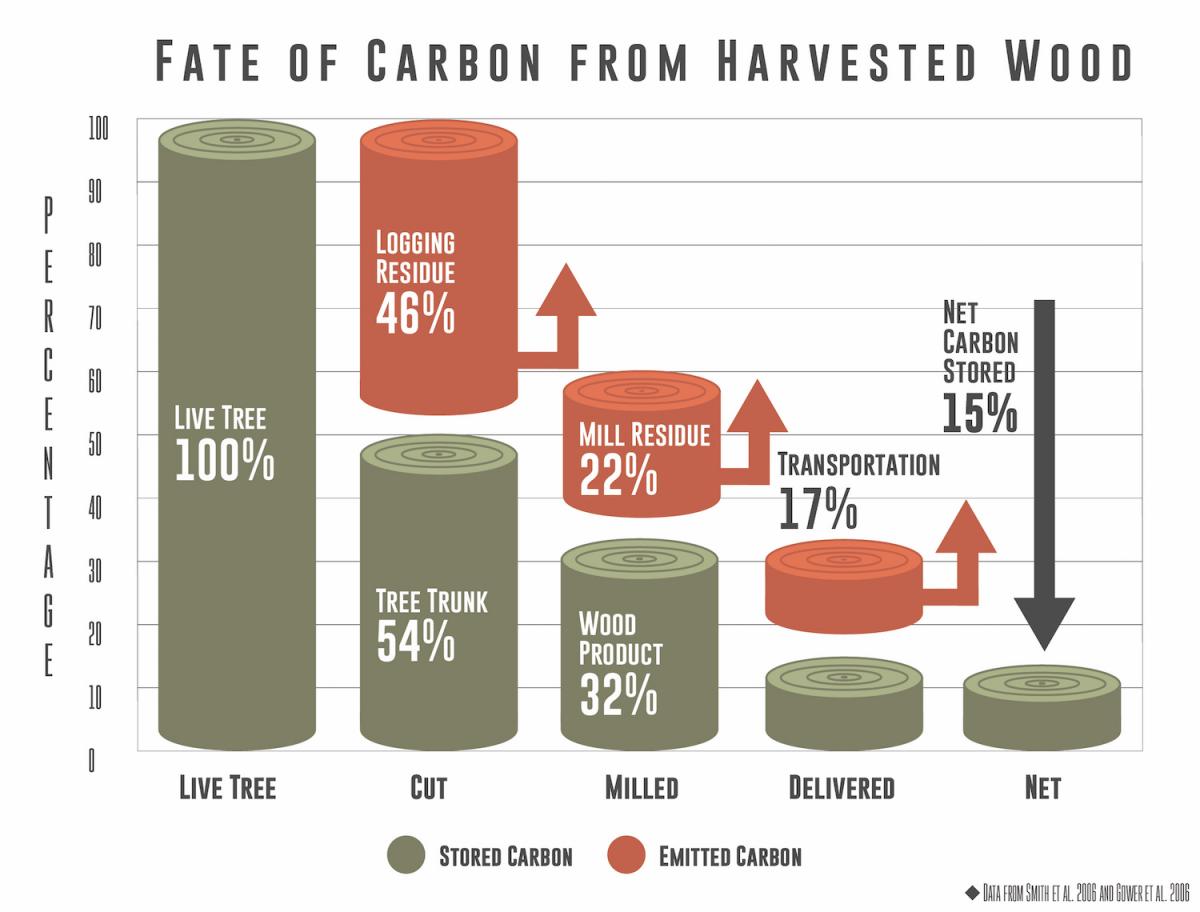
As the climate continues to change at an unprecedented pace, Oregon’s elected officials are talking more about ways to reduce the carbon emissions from our energy and transportation sectors. However, notably absent from these conversations is Oregon’s largest source of carbon emissions: logging. Recent research, including a groundbreaking study from Oregon State University, shows that Oregon’s logging industry emits more carbon into our atmosphere than any other sector.

Forests are among the largest stores of living carbon on the planet, and it turns out that the forests of western Oregon have a higher carbon density than almost any other forest type in the world. Unfortunately, the destruction and mismanagement of these forests over the past century has transferred massive amounts of stored carbon to the atmosphere, which has contributed significantly to the warming of the planet. But if we improve our forest management practices, Oregon’s forests can actually be part of the solution to climate change, not the problem.
It’s becoming increasingly clear that the single biggest step Oregon can take to combat climate change is to modernize our forest management laws. If we do this, and protect our public lands, the sprawling forestlands that blanket half of our state could become an invaluable asset in mitigating and adapting to climate change.
How do trees store carbon?
Carbon is one of the building blocks of life. As forests grow, trees intake carbon from the atmosphere to build living structures and store it in their trunks, bark, branches, and extensive root networks. This natural process, known as “carbon sequestration,” converts carbon dioxide from its gaseous state into a solid that remains safely stored for long periods of time.
Oregon’s oldest forests are particularly good at capturing and storing carbon, and they continue to absorb carbon even after tree growth appears to have slowed. The logging industry has falsely claimed that fast-growing young forests are better at absorbing carbon; however, research shows that old forests store far more carbon. Logging older trees and replacing them with younger ones emits tremendous amounts of CO2 and creates a “carbon debt” that takes many decades or centuries to repay.
How does logging emit carbon?
Unfortunately, a century of industrial logging practices has eliminated most of Oregon’s original old-growth forests and disrupted this natural carbon cycle. Logging kills trees, stops them from growing, and accelerates the transfer of carbon from the forest to the atmosphere. Our carbon-intensive logging practices make the timber industry Oregon’s largest source of global warming emissions.

To understand where all this carbon comes from, you need to look at the entire lifecycle of wood products. When a forest is clearcut, the branches, tree tops, and other logging residue left behind is usually burned or left to decompose. This process, accelerated by removing the protective forest canopy and drying out soils, releases large amounts of carbon that would have otherwise remained stored in the forest for many more years. There are also significant carbon emissions from the fossil fuels burned by logging equipment and log trucks. Once logs reach a mill, even more carbon is lost as the wood is processed and cut into two by fours and lumber. By the time wood products reach their end destination, only a fraction of the original carbon from the forest remains.
On top of all these emissions, logging destroys the living machinery that removes carbon from the atmosphere. The forest eventually regrows, but there is a significant pause in the forest’s natural capacity to capture and store carbon, which further exacerbates climate change.
What can you do about it?
The policy choices we make today will either continue to make Oregon’s forests a part of the climate problem, or ensure that they are part of the solution. Two of the best ways Oregon can act on climate change are to modernize our weak logging laws and to better protect our National Forests and other public lands.
1. Modernize Oregon’s outdated logging laws to reduce clearcutting and encourage climate-smart practices
Oregon’s timber industry adds more carbon pollution into the atmosphere every year than any other sector. Oregon’s state and private forest lands can only reach their potential to combat climate change if state logging laws are reformed and incentives are created to encourage climate-friendly practices. Read more about the grassroots movement to modernize Oregon logging laws here, and take action by asking Governor Kate Brown to support stronger logging rules: 503-378-4582
2. Permanently protect our remaining old-growth forests and encourage forest restoration on our public lands
Over the past few years, there have been numerous efforts to sell off our public lands and increase the scope and scale of logging in our public forests. One of the best ways to ensure that our forests continue to capture and store carbon is to reduce the rate of logging and permanently protect our forests as Wilderness. Call your Senators and your Congressional Representative today (look up your reps in Congress and their numbers here)
Additional benefits: climate resilience
Expanding protections for our public lands and reforming our outdated forest management practices would not only help us reduce excess carbon emissions, but would also help make Oregon’s forest ecosystems more resilient to the impacts of a changing climate. By defending and restoring our forests, we can safeguard clean drinking water and help plants and animals adapt to climate change.
Oregon’s forests offer a tremendous opportunity for storing carbon and mitigating climate change, but only if we modernize our logging laws and protect more of our public forests. Call your elected officials today to tell them how Oregon can act on climate by improving the management of our forests!
If you're interested in learning more about the fascinating relationship between forests and climate change, check out Oregon Wild's new report: Forest Defense is Climate Defense.

